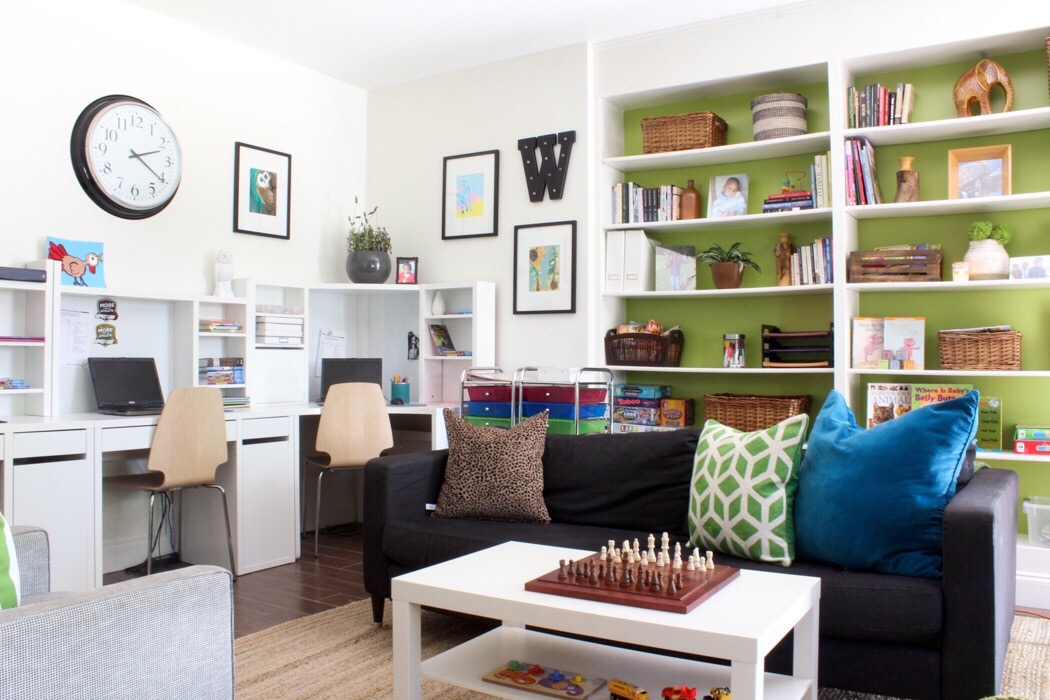When the school shared plans for distant learning, we all saw the writing on the wall (pun intended) but were still in denial. Could we really be charged with the task of homeschooling our children?
We now know the answer is, “Yes.”
Within one month, across our nation, schools have multiplied exponentially with our homes now becoming educational institutions. Areas formally known as the dining room or living room are considered the school room.
The pressure is on so how do we navigate these unchartered waters?
We do it by helping each other.
My friends at Ballard Designs and creators of the How to Decorate Podcast, interviewed me about my experience as a past homeschooler. Even as a veteran, I had to refresh my memory on how to implement a plan for giving my children an education and continue my work as an entrepreneur. It makes me tired just typing this.
Read on to see how we do it. Even as a reluctant homeschooler, you too can be successful during these challenging times.
#1 Carve out a workspace.
A successful design comes about when you observe how your child lives in the space and consider his interests. You don’t need an elaborate space to be effective especially since homeschooling will be temporary. At a minimum, have them spend more time sitting at a table versus lounging on a sofa or on the floor. Learning proper ergonomics protects your child from injury throughout their working life. It also helps them establish healthy habits for computer use.
During this time, you may be inspired to homeschool on a permanent basis. We first homeschooled years ago and created a dedicated academic setting within our home (see more photos here). However before making that leap, we successfully had school at the dining room table.

#2 Create office hours and a happy hour or two.
Homeschool hours are different for every family especially if the parents work during the day. Don’t think that your kindergartener will be the first or only child in night school. What matters is that you establish a routine of some sort. Kids crave routine and order and like to know what’s next. For our older children I stress to them that school is their “job” and it’s their responsibility to complete their work by a certain time. They also know to always ask questions when they don’t understand. Alongside you, they will dedicate the time needed to develop a vested interest in their education.
Everyone loves to be rewarded for their efforts. Children need happy hour probably more than adults. Bursting with energy, they often mistaken the house for a playground. If you want to preserve your antique console table or the 100-year-old vase passed down from your great-great-grandmother, then incorporate breaks within the day to curb boredom and to save your home from destruction.

#3 Enjoy lunch and learn sessions.
If you child’s school offers a smorgasbord of menu options, then they’ll likely expect the same at home. Unless you want to become a short-order cook, allow them to assist in daily meal preparation. Using measuring cups and spoons, recipes, and temperature gauges provide numerous learning opportunities for math enrichment and life skills. I quickly learned that when I allowed my children to help with meal preparation, even the pickiest eaters ate what they cooked.

Want more homeschooling inspiration? Listen in to my podcast feature with Ballard Designs and don’t forget to take it easy on yourselves, and your kiddos.
 Be well,
Be well,
Erika

+ show Comments
- Hide Comments
add a comment